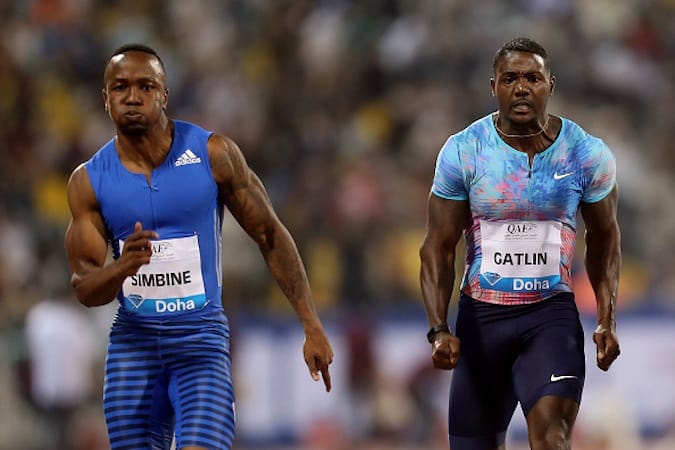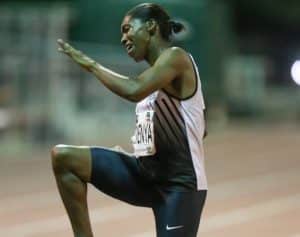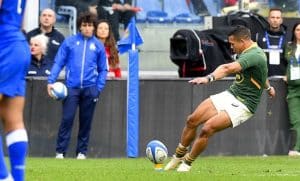Being one of the trailblazers of South African athletics seems to come naturally to Akani Simbine.
Last weekend when the Tuks athlete outsprinted Justin Gatlin to win the 100 metre sprint at the Diamond League Meeting in Doha it was the third time this season that he’s set a first in South African athletics. No other local sprinter has won the short sprint at a Diamond League Meeting.
Simbine is also the first local sprinter to run two sub-10-second 100m races on the same day and the first to run a sub-10sec 100m race and sub-20 seconds in the 200m on the same day.
Judging by Simbine’s performances so far it might not be at all far-fetched to predict that he’s capable of winning a medal at the World Championships in London.
The Tuks athlete’s progress as sprinter over the last six years is remarkable. In 2012 he set a new South African junior record, running 10.19 as part of Team South Africa at the Zone VI Games in Lusaka, Zambia.
Apart for 2013 he has managed to improve his time each year. In 2014 his best time was 10.02, in 2015 he ran 9.97 and last year he ran 9.89. His best time so far this season is 9.92.
Simbine’s coach, Werner Prinsloo views 2012 as his breakthrough year. ‘When Akani ran that 10.19 it changed my life as a coach. It was not only the time he ran but more importantly the build-up to the race. I realised that Akani was not powerful enough as a sprinter so I specifically changed his programme to include more strength training.
‘We were doing so for about three months before he set a new national junior record. Running 10.19 was a massive improvement as his previous best of about 10.49.
‘The next milestone for Akani was in 2013 when he started competing in Europe. Until then I was the one who taught him everything he knew about sprinting. Once he started racing internationally he became a student of sprinting and started to learn from the other athletes.
‘I always say that training is training, for an athlete to be successful he needs to learn how to run. That started happening for Akani in 2013. Sprinting will never just be about running as fast as you can when the starter’s gun goes.’
Prinsloo considers last year as the third breakthrough moment in Simbine becoming a world class sprinter. ‘We realszed that we needed to work on Akani’s start as internationally that was where he was losing races. His top speed was never a problem. I consider it to be on par with the likes of Asafa Powell but he lost out big time over the first 20 metres.
‘Akani’s start is now one of the best. He proved it at last year’s Olympic final in Rio where his reaction time out of the blocks was the fastest. If Akani has a good start there are very few sprinters who will be able to beat him.’
Prinsloo said that going forward it will all be about marginal gains for the Tuks sprinter.
‘For him to become a consistent 9.90 sprinter we will have to work on small specific details. The challenge for me as a coach will be good planning. Because Akani trains and races at such a high intensity it is important to make sure that he takes proper breaks from time to time in order for his body to recover.’
Prinsloo emphasised that the 200m is also important to him. ‘I realised during the South African Championships that we still need to work on Akani’s endurance for him to be able to run consistently good times in the 200. In Potchefstroom by the time he had to run the 200 metres final he had not much left in his ‘tank’.’
Picture of Simbine courtesy of Karim Jaafar/AFP/Getty Images





